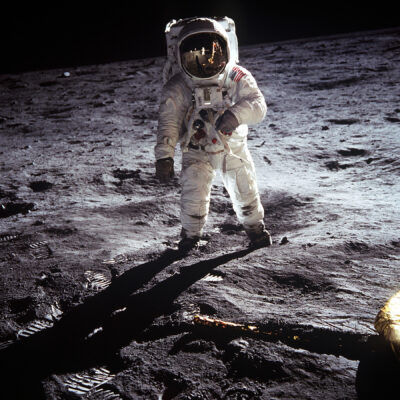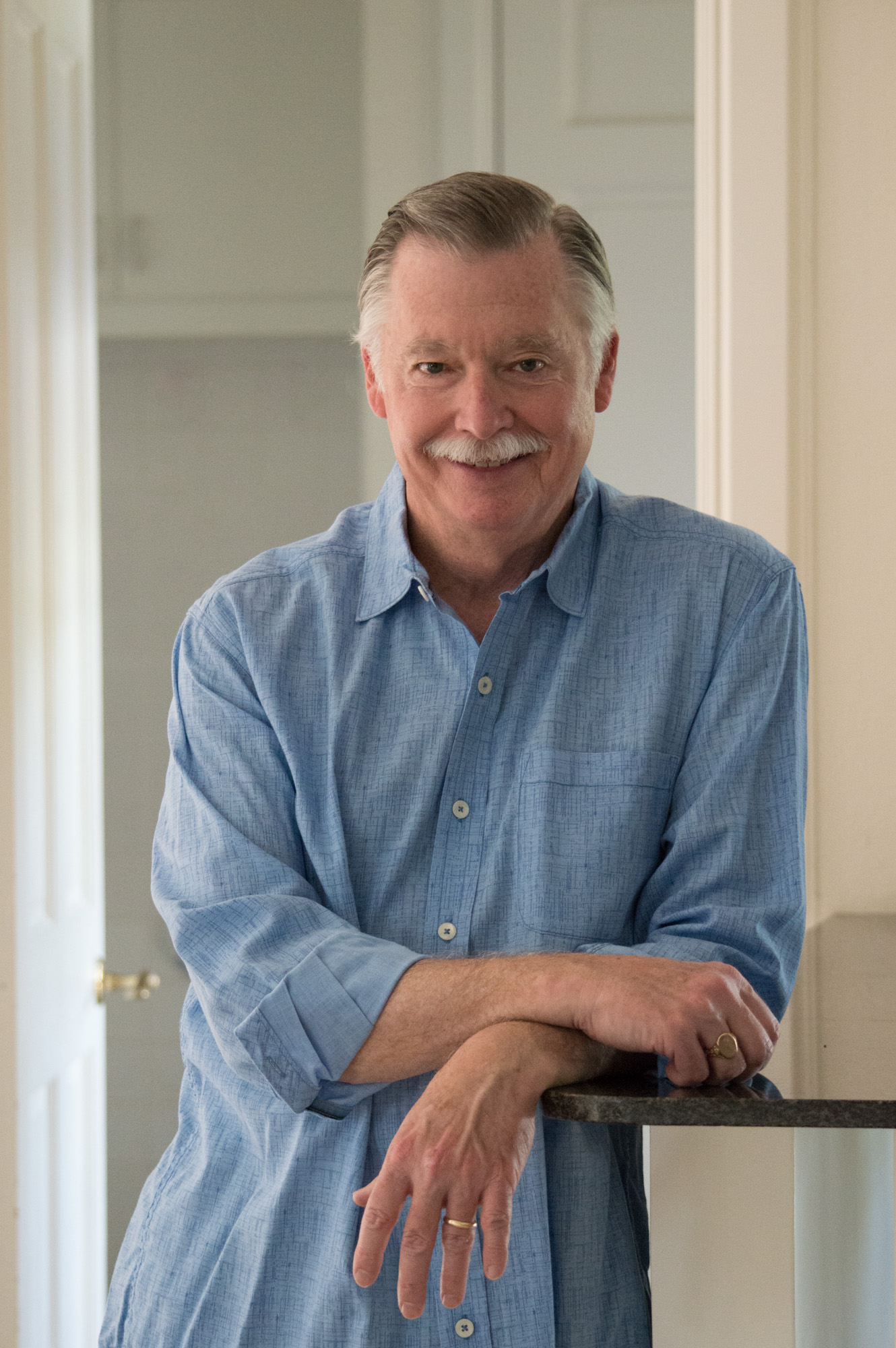
Moonshot
Published in Event, Leadership, Strategic PlanningThe death last week of astronaut Neil Armstrong marked the remembrance of a bygone era.
Armstrong, of course, was the first man to walk on the moon along with colleague Edwin “Buzz” Aldrin in July 1969.
The era began at the conclusion of World War II. The major players were the Soviet Union and the United States. The stakes were global security and superiority. The game was the Space Race.
Practicality + Pride = Our Program
Following World War II, the U.S. possessed a large strategic bomber force and advance bases in countries close to Soviet airspace. With no air force equivalent, the Russians made developing long-range rockets a high priority. Rockets that could send a human into orbit could also send an atom bomb to an enemy city. A time of renewed prosperity was tinged with fear as the U.S. and Soviet Union began a Cold War of espionage and propaganda.
On July 29, 1957, in recognition of the 1957-1958 International Geophysical Year, the White House announced that the U.S. intended to launch satellites by the spring of 1958. Two days later, the Soviets announced that they intended to launch a satellite by the fall of 1957. Space exploration was to be the new measure of victory between these two Cold War nations.
The Space Race was on. And the U.S. was already behind.
On October 4, 1957 the Soviet Union launched Sputnik 1, the first artificial satellite to orbit the Earth. Right on schedule. A month later, Sputnik 2 orbited the Earth with the first living passenger – a dog, Laika. In the USSR, still recovering from a devastating war, the launch of Sputnik and the space exploration program were met with great interest from the public and encouraged Russians by providing proof of technical prowess in the new era.
Americans wondered, “If we’re so good, why didn’t we get there first?”
Has your team gathered to develop a plan to reach new levels of success only to discover that your competition has out-smarted or out-executed you?
The period between Labor Day and Christmas is prime time for strategic planning.
I’ll examine the 10 Biggest Strategic Planning Mistakes and How to Avoid Them in a Sept. 7 webinar.
Your Moonshot
As your team focuses on finishing strong in 2012 and prepares for a robust start to the New Year, be mindful of these Space Race lessons and then answer the corresponding questions:
- It’s not where you start – Two months after Sputnik, the U.S. launched a rocket. The booster ignited, but two seconds after liftoff, rising just four feet, the rocket lost thrust. Settling against the launch pad, fuel tanks ruptured and exploded, destroying the rocket. It was a huge embarrassment for America. Congress responded by creating NASA to address technical shortcomings. America won the Space Race but had to overcome a shaky start. Ask: Which of our engines – our people, processes, programs – is not delivering the results we expect? What tough decisions must we make now to improve our performance?
- More than numbers – Soviet cosmonaut Yuri Gagarin became the first human in space when he entered orbit April 12, 1961, a day now celebrated as a holiday in Russia and other countries. Twenty-three days later, Alan Shepard entered space for the U.S., then on February 20, 1962, John Glenn became the first American to orbit Earth. Though still behind the Russians, the U.S. program was recording successes. Progress is a powerful motivator. Ask: Does our vision focus only on numbers or does it give our people something to cheer for? Do our people feel that what they’re doing matters?
- Play to win – In a private talk with NASA Administrator James Webb, President Kennedy said, “Everything that we do ought to really be tied into getting onto the moon ahead of the Russians…otherwise we shouldn’t be spending this kind of money. The only justification for [the cost] …is because we hope to beat [the Russians] and demonstrate that starting behind, as we did by a couple years, by God, we passed them.” In 1961, Kennedy announced that America “should commit itself to achieving the goal, before this decade is out, of landing a man on the moon and returning him safely to the earth.” Ask: Are we setting the bar high enough? How can we expect to attract other winners to our organization if we aren’t committed to being the best we can be?
- Stay with it – In December 1968, the U.S. became the race’s front runner when Apollo 8 orbited the moon. The crew sent back live photos and read the first 10 verses of the Book of Genesis in a Christmas Eve broadcast – the most-watched TV event ever. Three days later, Lovell, Borman and Anders splashed down safely. In July 1969, Neil Armstrong, Buzz Aldrin and Michael Collins flew almost a billion miles in a tin can guided by technology that wouldn’t make the cut in today’s iPhones. The crew descended 67 miles to the moon’s surface, touching down safely with just 25 seconds of fuel in the tank. Neil Armstrong reported, “The Eagle has landed.” More than 500 million people watched Armstrong and Aldrin walk on the moon before rejoining Collins waiting in Columbia. The astronauts splashed down safely. America had come from behind to win the Space Race. Ask: Do we have the mental toughness, the financial wherewithal and executional discipline to see our dream become a reality? How will we finish?
- No one succeeds alone – The night before their splashdown the crew of Apollo 11 made one final broadcast. All three astronauts thanked the “thousands and thousands” behind the scenes. “We would like to give special thanks to all those Americans who built the spacecraft,” said Neil Armstrong, “who put their hearts and all their abilities into those craft. God bless you. Good night from Apollo 11.” Ask: Do we have the talent we need to win? What barriers can I remove to help our people be more effective?
What’s your moonshot?
Ready to reset?
Attend my free Accountability webinar: I Did It! to set and achieve your 2021 goals.
- February 17th from 11 AM – 12:30 PM Central Time
- My free webinar will help you:
– Sharpen your personal goals
– Improve time management
– Tackle tough work-related issues
– Support remote workers
Learn More
To dive even deeper into the topic of accountability, I invite you to purchase a copy of my bestselling book, “Accountability: The Key to Driving a High-Performance Culture.”
Become a better leader.
Download my three free e-books.
Free Tips
Sign up to receive free tips on business, leadership, and life.
Get My Latest Book
HOW LEADERS DECIDE
History has much to offer today’s current and aspiring leaders.
Business schools teach case studies. Hollywood blockbusters are inspired by true events.
Exceptional leaders are students of history. Decision-making comes with the territory.



